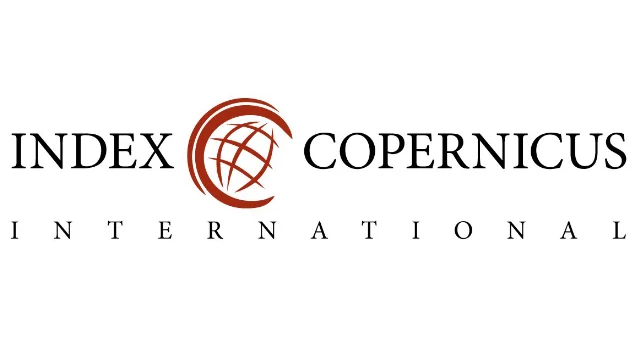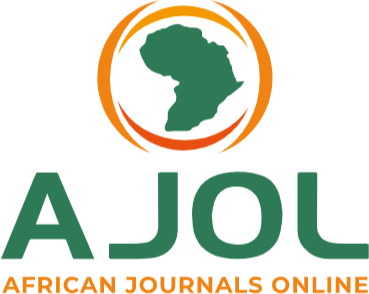Application of Green Computing at Nigerian Tertiary Institutions
Keywords:
Green computing, climatic change, computing devices, Nigerian tertiaryAbstract
Nnaemeka Emeka Ogbene, Hyacinth Chibueze Inyiama, Frank Ekene Ozioko, Nnamdi Johnson Ezeora, Agbo Chibuike George and Asogwa Tochukwu Chijindu
Green computing (also called green technology) is the use of computers and other computing devices/equipment in energy-
efficient and eco-friendly ways to conserve energy and reduce climatic change to its barest minimum. The frequent use of various
computing devices such as desktop computers, mainframe computers, data centres, and other electronic gadgets at tertiary institutions by a very large number of both staff and students result in energy being dissipated at regular intervals which may lead to climatic change and global warming that are hazardous to human health. Warmer temperatures over time
can change weather patterns and disrupt the usual balance of nature thereby posing many health risks to human beings and all other forms of life on earth. In this work, object-oriented analysis and design technology (OOADM) and unified modelling language (UML) tools were employed to develop a template for the application of green computing at Nigerian tertiary institutions. The two UML tools used: use-case and activity diagrams, show the various actors involved in the usage of green computing at tertiary institutions and the sequential steps required by each of the actors in using the green computing in his/her domain, respectively. The template well adopted by all the tertiary institutions and other establishments in Nigeria will help to conserve energy and reduce climatic change drastically, thereby creating a healthy environment.
Downloads
Published
Issue
Section
Similar Articles
- Ikenna Duruanyim, Emmanuel Victory Enyinnaya, Ifiok Dominic Ufia, Okoi Ina (Jnr.) Utum, Ayinya Johnathan Attah, Assessment of Resistance of Selected Nigerian Wood Species Treated with Rocket Fungicide and Mimosa pudica Linn. extracts against fungal infestation. , Communication In Physical Sciences: Vol. 12 No. 4 (2025): VOLUME1 2 ISSUE 4
- Benjamin Effiong, Emmanuel Akpan, Specification Procedure For Symmetric Smooth Transition Autoregressive Models , Communication In Physical Sciences: Vol. 12 No. 2 (2025): VOLUME 12 ISSUE 2
- Chidumebi Uzoho, The Role of Contaminated Water in Food Poisoning: An Assessment of Agricultural and Processing Practices , Communication In Physical Sciences: Vol. 12 No. 3 (2025): VOLUME 12 ISSUE 3
- Ifeanyi E. Otuokere, K. K. Igwe, Chelating and Antibacterial Potentials of Benzylpenicillin and its Ni(II) Complex , Communication In Physical Sciences: Vol. 8 No. 2 (2022): VOLUME 8 ISSUE 2
- Sameul Awolumat, Baernadette Tosan Fregene, Temporal Variability and Predictors of Fish Catch (2009-2011) in the Niger and Benue Rivers: Implications for Contemporary Natural Resources Management in Kogi State, Nigeria , Communication In Physical Sciences: Vol. 11 No. 4 (2024): VOLUME 11 ISSUE 4
- Aniekan Udongwo, Monitoring, Assessment, and Remediation of Heavy Metal Contamination: Techniques, Strategies, and Policy Frameworks , Communication In Physical Sciences: Vol. 10 No. 3 (2023): VOLUME 10 ISSUE 3 (2023-2024)
- Joseph Jacob, Shinggu D. Yamta, Influence of Moisture Absorption on some Mechanical Properties of Groundnut Shell Powder Reinforced Waste LDPE Composites , Communication In Physical Sciences: Vol. 7 No. 4 (2021): VOLUME 7 ISSUE 4
- Okoche Kelvin Amadi, Onyinyechi Uloma Akoh, Godson Chukwudi Eric, Adsorption Studies on the Inhibitive Properties of Aqueous Extracts of Theobroma cacao (TC) Leaves on Mild Steel in 1.0 M HCl , Communication In Physical Sciences: Vol. 9 No. 3 (2023): VOLUME 9 ISSUE 3
- Aniekan Udongwo, https://dx.doi.org/10.4314/cps.v12i2.17 , Communication In Physical Sciences: Vol. 12 No. 2 (2025): VOLUME 12 ISSUE 2
- Richard Alexis Ukpe, Exploration of Orange Peel Waste as Precursor for the Synthesis and Characterization of highly Crystalline and Mesoporous Silicon Oxide Nanoparticles , Communication In Physical Sciences: Vol. 11 No. 2 (2024): VOLUME 11 ISSUE 2
You may also start an advanced similarity search for this article.




